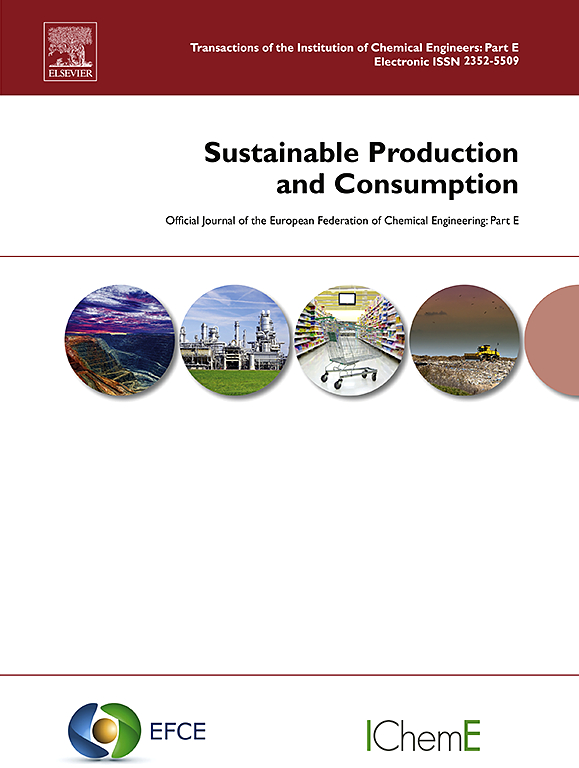Parameters influencing the prospective life cycle emissions of the Austrian building stock: a global sensitivity analysis
IF 9.6
1区 环境科学与生态学
Q1 ENVIRONMENTAL STUDIES
引用次数: 0
Abstract
Environmental building stock models have increasingly been developed to inform local policies. However, identifying and quantifying all relevant parameters for such large-scale modelling remains a challenge. This study identifies key dynamic parameters used to project life cycle greenhouse gas (GHG) emissions of the Austrian building stock through 2050, while also analyzing their systemic interactions. Both operational GHG emissions from energy consumption in buildings and embodied GHG emissions from new constructions, renovations and demolitions are included. The Morris screening analysis and the Sobol global sensitivity analysis are applied to a building stock model that combines dynamic material flow analysis with prospective life cycle assessment. The two sensitivity analysis methods produce different rankings of the most influential parameters, underscoring the need to combine them for a more comprehensive analysis. In addition to energy-related parameters, the average living area per person also emerges as one of the most influential parameters, emphasizing the importance of incorporating efficient use of space into current policies. The study also evaluates the impact of the rate at which each parameter will evolve by 2050. For instance, if GHG reduction measures are implemented slowly, reducing personal heating consumption or changing construction material production will have a greater impact than changing heating systems. However, if heating system upgrades can be quickly implemented, they would have a greater effect than the other two measures. This suggests that prioritizing GHG reduction strategies should also take into account the speed at which these measures can be deployed. Additional research is necessary to enhance the application of systems thinking in building stock models.

影响奥地利建筑库存预期生命周期排放的参数:全球敏感性分析
环境建筑存量模型越来越多地被开发出来,为地方政策提供信息。然而,确定和量化这种大规模建模的所有相关参数仍然是一个挑战。本研究确定了用于项目到2050年奥地利建筑的生命周期温室气体(GHG)排放的关键动态参数,同时还分析了它们之间的系统相互作用。包括建筑物能源消耗产生的温室气体排放和新建、翻新和拆除产生的具体温室气体排放。将Morris筛选分析和Sobol全局敏感性分析应用于将动态物料流分析与前瞻性生命周期评估相结合的建筑库存模型。这两种敏感性分析方法对最具影响力的参数进行了不同的排名,强调需要将它们结合起来进行更全面的分析。除了与能源有关的参数外,人均平均居住面积也是最具影响力的参数之一,强调了将有效利用空间纳入当前政策的重要性。该研究还评估了到2050年每个参数将以何种速度演变的影响。例如,如果缓慢实施温室气体减排措施,减少个人供暖消耗或改变建筑材料生产将比改变供暖系统产生更大的影响。然而,如果供暖系统升级能够迅速实施,它们将比其他两项措施产生更大的影响。这表明,确定温室气体减排战略的优先顺序还应考虑到这些措施的部署速度。加强系统思维在建筑存量模型中的应用还需要进一步的研究。
本文章由计算机程序翻译,如有差异,请以英文原文为准。
求助全文
约1分钟内获得全文
求助全文
来源期刊

Sustainable Production and Consumption
Environmental Science-Environmental Engineering
CiteScore
17.40
自引率
7.40%
发文量
389
审稿时长
13 days
期刊介绍:
Sustainable production and consumption refers to the production and utilization of goods and services in a way that benefits society, is economically viable, and has minimal environmental impact throughout its entire lifespan. Our journal is dedicated to publishing top-notch interdisciplinary research and practical studies in this emerging field. We take a distinctive approach by examining the interplay between technology, consumption patterns, and policy to identify sustainable solutions for both production and consumption systems.
 求助内容:
求助内容: 应助结果提醒方式:
应助结果提醒方式:


